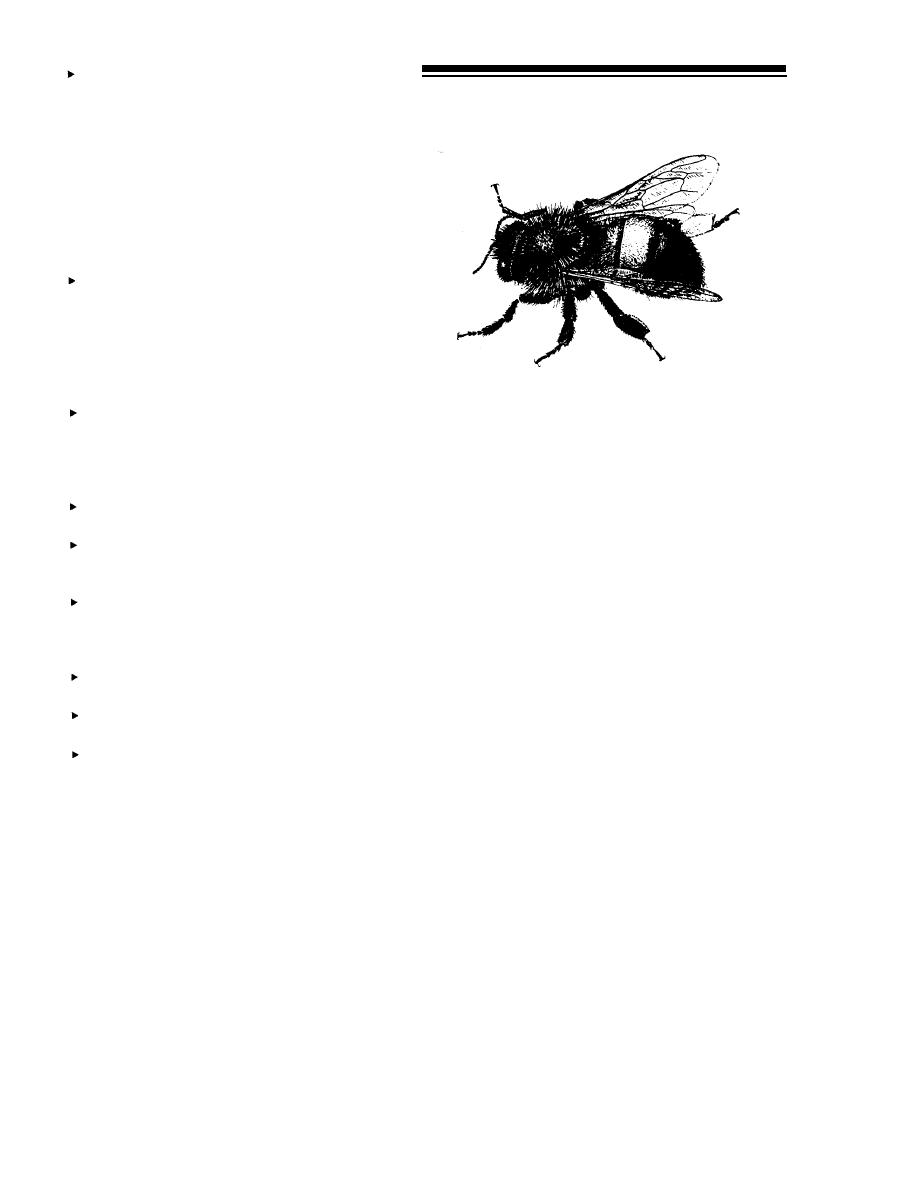

Custom Search
|
|

|
||
 Plug the entrance hole with dusted steel
wool or copper gauze. Dust the plug
HONEY BEES
and area immediately around the
Apis mellifera
entrance. [Returning yellowjackets cue
on entrance holes using surrounding
landmarks and seeing the shadowed
opening. They will land at the entrance
and pull at the plug picking up toxic
dust. Any still alive inside will also
work at the dusted plug.
Aerial Nests
Cut aerial nests down and seal them in
a plastic bag. [The queen and workers
inside will be dead, and larvae will fall
out of their cells and die from either
insecticide poisoning or starvation.
Pupae in capped cells may escape the
treatment, however, and emerge later.]
Be especially cautious when using
ladders to get at aerial nests or wall
The honey bee was introduced into the United
void nests. Set the ladder carefully and
States in Colonial America. Honey bees are highly
move slowly.
social insects and communicate with each other,
Wall Voids
relaying direction and distance of nectar and pollen
Approach the entrance hole cautiously;
sources. Bees make combs of waxen cells placed side
stay out of the normal flight pattern.
by side that provide spaces to rear young and to store
W a t c h f i r s t . Observe whether
honey. The bee colony lives on the stored honey
yellowjackets entering the nest go
throughout winters, and therefore, can persist for
straight in or to one side or the other.
years.
Insert the narrow diameter plastic tube
When colony populations are high, the queen may
in the hole in the observed direction of
move part of the colony to new harborage. Bees
entrance and release pesticide for 10-30
swarm at this time, usually finding hollow trees to
seconds.
begin their new colony, but they occasionally work
Dust inside the entrance and plug it as
their way into building wall voids.
with underground nests.
A honey bee colony in a house wall can cause
Remember, German yellowjacket nests
major problems. The bees can chew through the wall
may remain active into December.
and fly inside. Their storage of large amounts of
Use care not to contaminate food
honey invites other bees and wasps. Their detritus
surfaces.
(e.g., dead bees, shedded larval skins, wax caps from
Spraying trash cans and the outside of food stands
combs and other material) attracts beetles and moths.
will reduce or repel yellowjackets at sporting events;
When a bee colony is found in a building wall, it
the treatment will not last more than one day. Honey
must be killed. Killing can be accomplished in the
bees are also killed with this control measure.
same way as killing yellowjackets in wall voids is
Remember, do not contaminate food surfaces.
done. Listen to the bee noise from inside rooms to
A synthetic chemical lure (composed of 2,3-
locate the exact position of the nest in the wall to
hexadienyl butyrate) is attractive to the Western
assure that the whole colony is treated.
yellowjacket. Traps with this lure were found to
After the colony is dead, remove the nest. If the
depress wasp populations successfully in a peach
nest is not removed, the wax combs -- normally cooled
orchard and in some western campsites. They are
by the bees -- will melt and allow honey to flow down
ineffective with eastern species.
through the walls. Honey stain can never be removed;
the walls will have to be replaced. As well, the freed
Follow-up
honey attracts robber bees and wasps. The comb wax
Ongoing monitoring throughout the active
will attract wax moths that may persist for several
yellowjacket season is essential when a pest
years. The dead bees attract carpet beetles.
management program is in place at parks, recreational
areas, zoos and other outdoor activity areas.
Module Two, Chapter 2, Pg 6
|
 |
|
 |
||